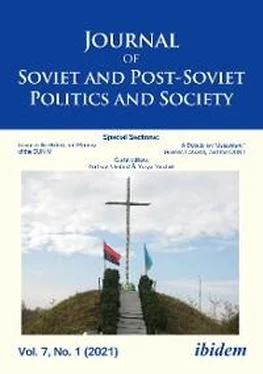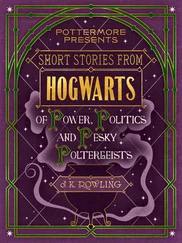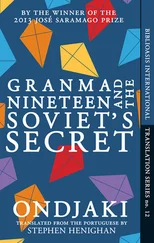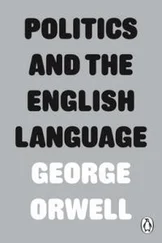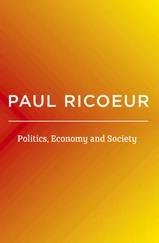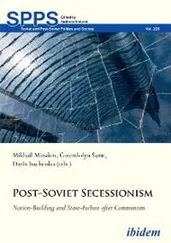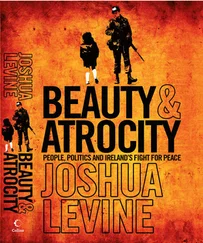8 Ibid . On V’iatrovych, see in JSPPS: Shkandrij, “Volodymyr Viatrovych’s Second Polish–Ukrainian War. ” For a Polish reaction to a provocative Facebook post by V’iatrovych, see, for example: Krzysztof Janiga, “Duda obok zbrodniarza z UPA na fotomontażu szefa ukraińskiego IPN,” Kresy.pl , 3 July 2017, kresy.pl/wydarzenia/spoleczenstwo/duda-obok-zbrodniarza-upa-fotomontazu-szefa-ukrainskiego-ipn/. See also: Christopher Gilley and Per Anders Rudling, “The History Wars in Ukraine Are Heating Up,” History New Network , 9 May 2015, http://historynewsnetwork.org/article/159301 (accessed 10 February 2020); Andreas Umland, “Sylvester Stallone as a Boxer,” Historians.in.ua , 24 May 2015, http://www.historians.in.ua/index.php/en/avtorska-kolonka/1520-andreas-umland-sylvester-stallone-as-a-boxer-a-comment-on-the-infamous-ukrainian-decommunization-laws-and-professional-expertise-in-ukrainian-public-affairs%20 (accessed 10 February 2020); Jared McBride, “How Ukraine’s New Memory Commissar Is Controlling the Nation’s Past,” The Nation , 13 August 2015, www.thenation.com/article/archive/how-ukraines-new-memory-commissar-is-controlling-the-nations-past/ (accessed 10 February 2020); Josh Cohen, “The Historian Whitewashing Ukraine’s Past,” Foreign Policy , 2 May 2016, foreignpolicy.com/2016/05/02/the-historian-whitewashing-ukraines-past-volodymyr-viatrovych/ (accessed 10 February 2020); Tarik Cyril Amar, “The Radical Historian Rewriting Ukraine’s Past,” WYNC Studios , 20 May 2016, www.wnycstudios.org/podcasts/otm/segments/radical-historian-rewriting-ukraines-past (accessed 10 February 2020); Per Rudling, Jared McBride, and Tarik Amar, “Ukraine’s Struggle with the Past Is Ours Too,” Open Democracy , 15 June 2016, www.opendemocracy.net/en/odr/ukraine-s-struggle-with-past-is-ours-too/ (accessed 10 February 2020); Andreas Umland, “Bad History Doesn’t Make Friends,” Foreign Policy , 25 October 2016, http://foreignpolicy.com/2016/10/25/bad-history-doesnt-make-friends-kiev-ukraine-stepan-bandera/ (accessed 10 February 2020); “Historians Sign Petition Objecting to the Inclusion of a Nationalist Who Praised a Nazi Collaborator,” History News Network , 8 March 2017, historynewsnetwork.org/article/165383 (accessed 17 February 2021); and David R. Marples, “Memory Laws: Censorship in Ukraine,” E-International Relations , 5 July 2020, www.e-ir.info/2020/07/05/memory-laws-censorship-in-ukraine/ (accessed 17 February 2021).
9Vladyslav Hrynevych and Paul-Robert Magosci (eds.), Babyn Iar: Istoriia i pamiat’ (Dukh i Litera, 2016).
10“Memorial’nyi tsentr Babiy Iar izmenil nabliudatel’nyi sovet i komandu proekta,” Levyi Bereg , 5 December 2019, https://lb.ua/culture/2019/12/05/443987_memorialniy_tsentr_babiy_yar.html (accessed 17 February 2021).
11Ivan Kozlenko, “Totalitarnyi dovhobud, Ch. 1,” Levyi Bereg , 14 April 2020, https://lb.ua/culture/2020/04/14/455215_totalitarniy_dovgobud_shcho_z.html (accessed 24 June 2020). This article was followed by further op-eds.
12See, for instance: Karel Berkhoff, Harvest of Despair: Life and Death in Ukraine under Nazi Rule (Belknap Press, 2008).
13Karel Berkhoff, “Z etychnykh mirkuvan’ bil’she ne mozhu publichno pidtrumuvaty proekt Memorialu ‘Babyn Iar’”, Glavkom , 22 April 2020, https://glavcom.ua/columns/KarelBerkhoff/gollandskiy-istorik-karel-berkgof-z-etichnih-mirkuvan-bilshe-ne-mozhu-publichno-pidtrimuvati-proekt-memorialu-babin-yar-675364.html (accessed 17 February 2021).
14The first open letter criticized the BYHMC project and its proposed methods of memorialization: “Khrzhanovs’kyi ne povynen pratsiuvaty v Babynomu Iaru: Zaiava,” Istorychna pravda , 30 April 2020, https://www.istpravda.com.ua/short/2020/04/30/157419/ (accessed 7 May 2020). The second letter was addressed to the President and Prime Minister of Ukraine demanding a transfer of authority over the memorialization of Babyn Yar to official state organs: “The Ukrainian Cultural and Academic Community’s Appeal about the Commemoration of Babyn Yar,” Krytyka , 22 May 2020, https://krytyka.com/en/articles/ukrainian-cultural-and-academic-communitys-appeal-about-commemoration-babyn-yar (accessed 20 June 2020).
15More on the concept of dignity in relation to the Euromaidan, in: Mychailo Wynnyckij, Ukraine’s Maidan, Russia’s War: A Chronicle and Analysis of the Revolution of Dignity ( ibidem -Verlag, 2019).
16“Holava Instytutu Natspamiati Drobovych,” Hromadske , 8 May 2020, https://hromadske.ua/posts/glava-institutu-nacpamyati-drobovich-pid-shorsom-yak-variant-zrobiti-naduvnih-pokemoniv-abo-skulpturu-yaka-jogo-obnimaye (accessed 17 February 2021). See also: “Eksperymenty rosiianyna Khrzhanovs’koho peretvoriat’ ‘Babyn Iar’ na atraktsion dlia ‘frikiv’: Drobovych,” 4 kanal , 30 April 2020, https://www.youtube.com/watch?v=mFKNPhs_ZiU (accessed 17 February 2021); Oksana Denisova, “Holova INP Anton Drobovych: ‘Babyn Iar buv do Khrzhanovs’koho, Babyn Iar bude i pislia n’oho,” Suspil’ne , 4 May 2020, https://suspilne.media/31091-golova-inp-anton-drobovic-babin-ar-buv-do-hrzanovskogo-babin-ar-bude-j-pisla-nogo/ (accessed 17 February 2021).
17In chronological order, until 2016: John A. Armstrong, “Collaborationism in World War II: The Integral Nationalist Variant in Eastern Europe,” Journal of Modern History 40, no. 3 (1968): 396–410; Gabriel N. Finder and Alexander V. Prusin, “Collaboration in Eastern Galicia: The Ukrainian Police and the Holocaust,” East European Jewish Affairs 34, no. 2 (2004): 95–118; Frank Golczewski, “Die Kollaboration in der Ukraine,” in Kooperation und Verbrechen: Formen der “Kollaboration” im östlichen Europa 1939–1945 , eds. Christoph Dieckmann et al. (Wallstein, 2003), 151–83; Vladimir Melamed, “Organized and Unsolicited Collaboration in the Holocaust,” East European Jewish Affairs 37, no. 2 (2007): 217–48; Wendy Lower, “Pogroms, Mob Violence and Genocide in Western Ukraine, Summer 1941: Varied Histories, Explanations and Comparisons,” Journal of Genocide Research 13, no. 3 (2011): 217–46; Kai Struve, “Rites of Violence? The Pogroms of Summer 1941,” Polin: Studies in Polish Jewry 24 (2011): 257–74; Per Anders Rudling, “Terror and Local Collaboration in Occupied Belarus: The Case of Schutzmannschaft Battalion 118,” Romanian Academy “Nicolae Iorga” History Institute Historical Yearbook 13 & 14 (2011 & 2012): 195–214 & 99–121; Kai Struve, “Tremors in the Shatter-Zone of Empires: Eastern Galicia in Summer 1941,” in Borderlands: Ethnicity, Identity and Violence in the Shatter-Zone of Empires, eds. Omer Bartov and Eric Weitz (Indiana University Press 2013), 463–84; Frank Grelka, “Politics and Military Actions of Ethnic-Ukrainian Collaboration for the ‘New European Order’,” in Revisionist Politics in Europe, 1938–1945, eds. Marina Cattaruzza and Dieter Langewiesche (Berghahn, 2013), 126–41; Yuri Radchenko, “‘We fired all cartridges at them’: Ukrainische Hilfspolizei and the Holocaust on the Territory of the Generalbezirk Kharkiv, 1941–1943,” Yad Vashem Studies 41, no. 1 (2013): 63–98; Kai Struve, Deutsche Herrschaft, ukrainischer Nationalismus, antijüdische Gewalt: Der Sommer 1941 in der Westukraine (DeGruyter-Oldenbourg, 2015); Olesya Khromeychuk, “Ukrainians in the German Armed Forces During the Second World War,” History: The Journal of the Historical Association 100, no. 343 (2016): 704–24; Kai Struve, “Anti-Jewish Violence in Summer 1941 in Eastern Galicia and Beyond,” in Romania and the Holocaust: New Research – Public Discourse – Remembrance, ed. Simon Geissbühler ( ibidem -Verlag, 2016), 89–113; Raz Segal, Genocide in the Carpathians: War, Social Breakdown, and Mass Violence, 1914-1945 (Stanford University Press, 2016); Per Anders Rudling, “Dispersing the Fog: The OUN and Anti-Jewish Violence in 1941,” Yad Vashem Studies 44, no. 2 (2016): 227–45; Jared McBride, “Who Is Afraid of Ukrainian Nationalism?” Kritika: Explorations in Russian and Eurasian History 17, no. 3 (2016): 647–63. There is a separate and, by now, large body of scholarly literature devoted specifically to the L’viv pogroms of summer 1941 which is not listed here.
Читать дальше
